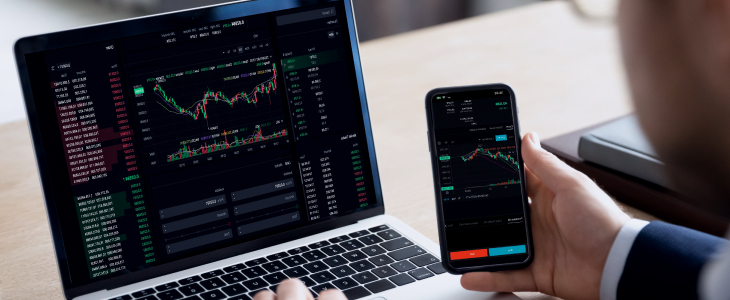
The Essential Guide to Forex Market Trading
In recent years, Forex market trading has gained immense popularity among investors and traders worldwide. Whether you are a novice looking to begin your trading journey or an experienced trader aiming to refine your skills, understanding the essentials of Forex trading is crucial. This article delves into the various aspects of Forex trading, including strategies, tools, and best practices to help you navigate this dynamic market. For those looking for trading platforms, consider exploring forex market trading MT4 Forex Brokers, which are popular among traders for their various features and functionalities.
What is Forex Market Trading?
The Foreign Exchange (Forex or FX) market is the largest financial market in the world, with a daily trading volume exceeding $6 trillion. Unlike stock markets, which operate on exchanges, the Forex market is decentralized, meaning that trading occurs directly between participants via electronic networks and over-the-counter (OTC) transactions. This unique structure allows for trading 24 hours a day across different time zones, making it highly accessible for traders worldwide.
Key Concepts and Terminology
To become successful in Forex trading, it is vital to familiarize yourself with key concepts and terminology:
- Pip: A pip is the smallest price move that a given exchange rate can make based on market convention. In most currency pairs, it is typically 0.0001.
- Lot Size: Trading in Forex usually occurs in specific amounts known as lots. Standard lots represent 100,000 units of currency, mini lots represent 10,000 units, and micro lots represent 1,000 units.
- Leverage: Leverage allows traders to control a more substantial position with a smaller amount of capital. While it can amplify profits, it also increases the risk of significant losses.
- Bid and Ask Price: The bid price is the amount a trader can sell a currency for, while the ask price is the amount for which they can buy it.
- Spread: The spread is the difference between the bid and ask price and is considered a transaction cost in Forex trading.
Trading Strategies
Successful Forex trading requires a well-defined strategy. Here are a few popular trading strategies used by Forex traders:
1. Scalping
Scalping is a strategy that involves making numerous trades over short periods. Scalpers aim to profit from small price changes and usually hold positions for just a few minutes. It requires a strict trading plan and discipline to manage risk effectively.
2. Day Trading
Day trading involves opening and closing positions within the same trading day. Day traders capitalize on intraday price movements and typically avoid holding trades overnight to mitigate exposure to market volatility that can occur outside trading hours.
3. Swing Trading
Swing traders seek to capture short to medium-term moves in the market. They hold positions for several days or weeks, using technical analysis and market trends to identify potential breakouts and reversals.
4. Position Trading
Position trading is a long-term strategy where traders hold positions for weeks, months, or even years. This approach is typically based on fundamental analysis and economic indicators, with traders aiming for more significant price movements.
Tools and Platforms
Selecting the right tools and trading platform is essential for successful Forex trading. Here are some widely used platforms and tools:
1. Trading Platforms

Platforms like MetaTrader 4 (MT4) and MetaTrader 5 (MT5) are popular among Forex traders due to their user-friendly interface and extensive features, including various technical indicators, charting tools, and automated trading capabilities. Ideally, your broker should offer a platform that suits your trading style and preferences.
2. Technical Analysis Tools
Technical analysis is crucial in Forex trading. Traders commonly use tools like Moving Averages, Relative Strength Index (RSI), Fibonacci retracements, and Bollinger Bands to analyze price movements and identify potential trade setups.
3. Economic Calendars
Economic calendars help traders keep track of crucial economic events and indicators that can affect currency values, such as interest rate changes, employment data, and GDP reports. Understanding these events can help traders make more informed decisions in their trades.
Risk Management
Effective risk management is one of the most critical aspects of successful Forex trading. Here are essential practices to adopt:
- Define Your Risk Tolerance: Determine how much capital you are willing to risk on each trade and how much you can afford to lose in total.
- Use Stop-Loss Orders: A stop-loss order automatically closes a position at a predetermined price to limit losses.
- Diversify Your Portfolio: Avoid putting all your capital into a single trade or currency pair; instead, diversify your investments across different assets.
- Stay Informed: Keep up with financial news and market trends that may affect currency movements, allowing you to make timely decisions and adjustments.
Conclusion
Forex market trading offers ample opportunities for those willing to learn and adapt to its dynamic nature. By understanding the core concepts, employing effective strategies, utilizing the right tools, and implementing sound risk management practices, you can enhance your chances of success in this exciting market. Remember that continuous education and practice are key to becoming a proficient Forex trader. With patience and perseverance, you can develop the skills needed to thrive in Forex trading and navigate the challenges it presents.